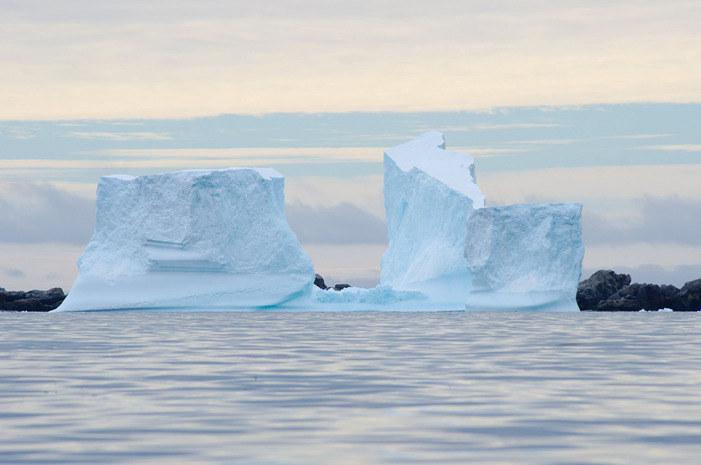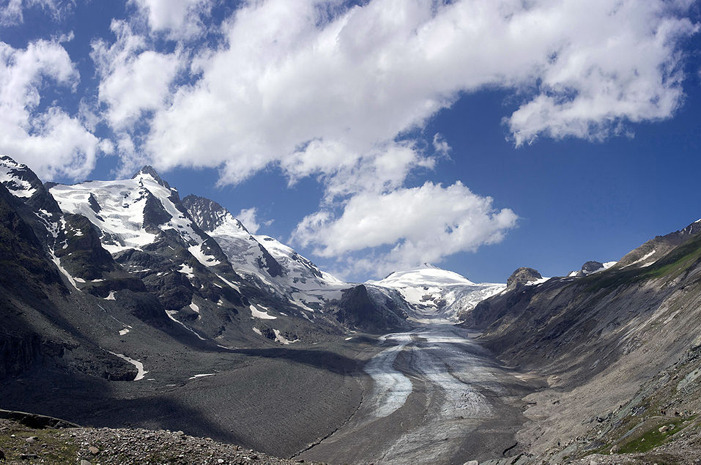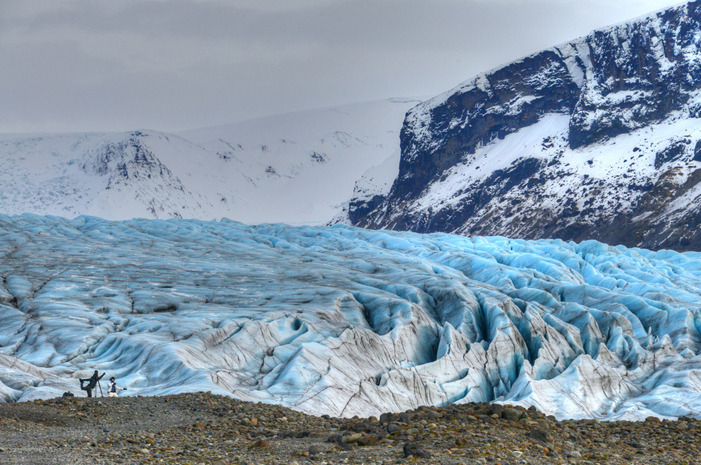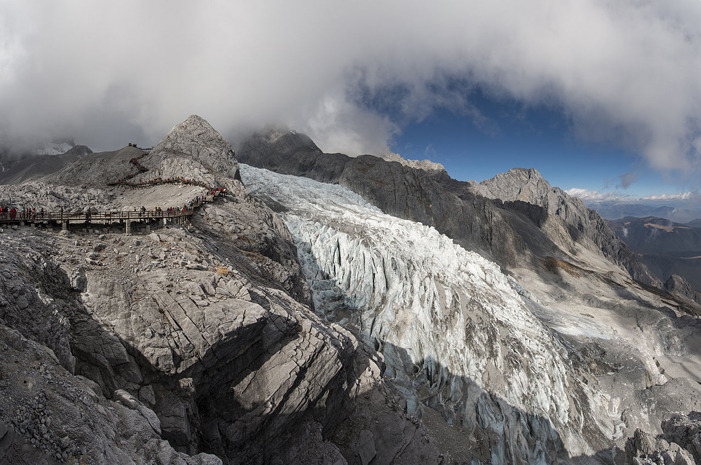The Most Spectacular Glaciers To Visit Before They Melt
The Antarctic contains 99% of the world's glacial ice and some of the most incredible ice formations. Unfortunately, some of the glaciers have begun to melt. The Totten Glacier of East Antarctica is losing ice because warm water is pooling underneath it. According to the Australian Antarctic Division, the amount of ice lost is "equivalent to 100 times the volume of Sydney Harbour every year."
2. EQI Glacier, Greenland
EQI Glacier is absolutely stunning. But, it is constantly carving and dropping blocks of ice into the water below, thanks to climate change. This causes massive tidal waves and danger for those traveling by boat to the glacier. Stay in the Lodge Eqi for views over the active glacier and opportunities to hike to the Ice Cap or spend the night on the Ice Cap in a tent.
3. Glacier National Park, Montana, USA
Glacier National Park started with 150 active glaciers; today it only has about 25. Sperry Glacier is one of the largest glaciers in the park and has withdrawn about 75 percent since the mid-18th century. According to USGS, mountain snowpacks hold less water and began melting at least two weeks earlier in the spring. The loss of glaciers can negatively impact the parks ecosystems and landscape aesthetics valued by the park visitors. Make sure you get out to Glacier National Park soon if you want to see the remaining glaciers before they're gone!
4. Pasterze Glacier, Austria
Pasterze Glacier is the longest glacier in Austria and sits on the foot of Austria's largest mountain. It is continuously melting by 33 feet every year. "Austrian geologists have warned that the country's glaciers melted faster this year than ever before and predict that all, including the massive Pasterze glacier, will have vanished by the year 2050," The Local reports. The loss of Austria's glaciers will change the supply of irrigation and drinking water, negatively impacting parts of the ski industry.
5. Athabasca Glacier, Canada
Athabasca Glacier is part of the Rocky Mountains Columbia Icefield located in Jasper National Park. It has been shrinking for about 150 years and is losing more than five meters of ice every year. "The U.S. National Climate Assessment said the trend is expected to continue and has implications for hydro-power production, ocean circulation patterns, fisheries and a global rise in sea levels," according to CBCnews.
6. Vatnajokull Glacier, Iceland
Vatnajokull is the largest glacier in Iceland, rising more than 6,500 feet in the air and covering 8 percent of the country. Because of Iceland's rising temperatures and reduced snowfall, the glacier is melting. A recent report from the Icelandic government's Committee on Climate Change warns that by the next century, Iceland's glaciers will be no more. Take a trip to Iceland soon and check out this spectacular glacier before it's too late.
7. Yulong Glacier, China
Yulong Glacier is said to resemble a dragon; a dragon that happens to be covered by China's most incredible glaciers. It is an extremely high glacier and requires the use of oxygen to climb it. Unfortunately, the glacier is melting extremely fast; according to one of China's leading environmental scientists, "future generations will only be able to experience the Yulong glacier through their history books (abcnews)."
8. Upsala Glacier, Argentina
Upsala Glacier is located in Argentina's Los Glaciares National Park. It is surrounded by forests and the spectacular Lake Argentino. Blame global warming for the melting of this glacier; it has been receding since about 1999. Icebergs are continuing to fall and fill the water. Make sure you take a tour to this glacier soon before the ice mass retreats and continues to thin.
9. Marjerie Glacier, Alaska
Located in Glacier Bay, Marjerie Glacier was declared a national monument in 1925 then declared a world heritage in 1992. It was once an enormous single glacier but high temperatures have caused it to fall apart and create smaller glaciers. Marjerie Glacier has a stunning blue appearance and is surrounded by beautiful mountains. Make sure you plan your trip in advance; you have to take a cruise ship or helicopter to see this one.
10. Aletsch Glacier, Switzerland
Aletsch Glacier is the largest glacier in the Bernese Alps of south-central Switzerland. Measuring more than 14 miles, you are free to enjoy a mountain top view from Eggishorn Peak. Unfortunately, the glacier has retreated, and if the glaciers water continues to melt and get trapped behind dams of ice it can result in massive flooding.
11. Franz Josef Glacier, South Island, New Zealand
The 7.5 mile long Franz Josef Glacier starts in the Southern Alps and ends in Westland Tai Poutini National Park. Due to high temperatures, the glacier has been losing ice over the years. Overtime, the glacier has melted so much that no one can walk up the valley and climb the face of the glacier. Tourists are now being flown to the ice via helicopter.
12. Jostedalsbreen Glacier, Norway
Take a 10-minute boat trip, then a 20 minute walk and you will arrive at the largest glacier in continental Europe. Jostedalsbreen is 37 miles long and 2,000 feet thick. "After AD 2000 glacier behavior was dominated by a strong frontal retreat, in some cases causing a separation of the lowermost glacier tongue" reports SAGE journals. The climate changes are causing it to slowly melt, so get out there and visit the Jostedalsbreen Glacier before it's too late!
13. Drang-Drung, Himalayas, India
Also called the Durung Drung Glacier, it is located in Himalayas, India. It reaches an altitude of 21,490 feet. Fortunately, you can reach the Drang-Drung Glacier by car or bus. This glacier is the source of the Doda River and Stod River. "Come rain or shine, or even snow, some glaciers of the Himalayas will continue shrinking for many years to come," according to Homeland Security News Wire. Some are worried within the next few decades the Himalayan glaciers may disappear, eventually causing the rivers to run dry.
14. Furtwangler Glacier, Mt. Kilimanjaro, Tanzania
Furtwangler Glacier is located close to the summit of Mount Kilimanjaro. Between October 1912 to June 2011, almost 85 percent of the ice cover disappeared. By 2040, most of the ice mass is expected to be gone. According to National Geographic, "when it was drilled for ice core samples in 2000, the Furtwängler was completely water-saturated. Some scientists attribute the overflow to volcanic vents, heating the base of the glacier and melting the bottom layer of ice." Get out to the Furtwangler Glacier before it vanishes.
15. Perito Moreno Glacier, Argentina
The Perito Moreno Glacier is located in Los Glaciares National Park and is one of the most popular tourist destinations in the Argentinean Patagonia. It is the third-largest reservoir of fresh water in the world. Due to warm temperatures, over the past 50 years many of the glaciers in Los Glaciares have been shrinking. However, the Perito Moreno Glacier is one of the three Patagonian glaciers that are actually growing!









